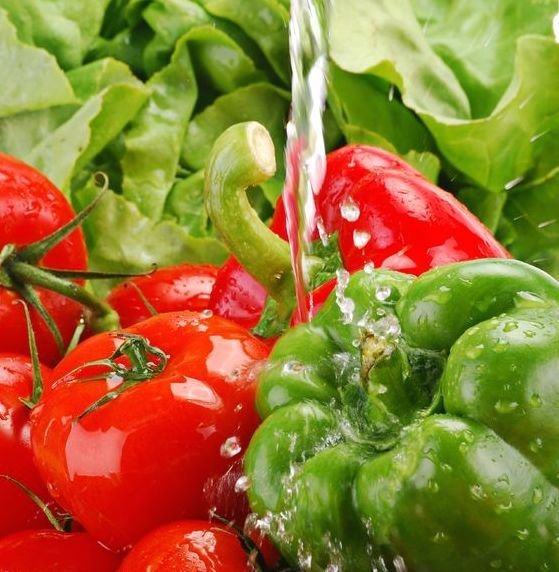The U.S. Centers for Disease Control and Prevention (CDC) released the nation’s food safety grades in April and the report card showed that foodborne infections continue to be an important public health problem. The data was collected from the Foodborne Disease Active Surveillance Network (FoodNet), experts from the CDC, ten state health departments, the U.S. Department of Agriculture’s (USDA) Food Safety and Inspection Service and the U.S. Food and Drug Administration (FDA). FoodNet logged more than 19,000 infections, 4,200 hospitalizations and 80 deaths from nine pathogens it tracks for 48 million people—encompassing about 15 percent of the American population. Overall, the CDC estimates that each year roughly one in six Americans get sick, 128,000 are hospitalized and 3,000 die of foodborne illnesses. The CDC recognizes that enhanced measures are needed to control or eliminate pathogens in domestic and imported food. There is a critical need to reduce or prevent contamination of food during growing, harvesting, processing, preparation and serving. This includes the training and equipping of food service personnel with the best tools and the necessary knowledge to provide safe food for consumers. The challenge is not just eliminating the harmful pathogens, but doing so with products and processes that are themselves safe for food and food preparation environments.

For meeting these challenges, there is a solution that is simpler than one might think. It’s called electrolyzed water, also known as eWater. The process combines tap water with small amounts of food-grade salt and low levels of electricity in special on-site generators to produce two different products—highly efficient cleaner-degreasers and powerful sanitizer-antimicrobials. The eWater products are approved for cleaning and sanitizing throughout food service operations and food-contact surfaces, as well as a wash for fruits and vegetables. In short, eWater is an effective tool for food safety––it doesn’t harm food, employees or the environment, and it can provide significant financial benefits.
History of eWaterI
In the United States, eWater is just beginning to be acknowledged, understood and applied in the foodservice industry. However, eWater is not a new concept.
Scientist Michael Faraday discovered the laws of electrolysis in the mid 1800s. From that beginning, eWater as a technology has matured to be used throughout the world for a wide array of applications especially in Asia, Russia and other areas of the world. In Japan, eWater is used to fill swimming pools and clean medical instruments. Because of its ability to kill fungi, bacteria and viruses without harming human tissue, it is also used in medical procedures. Japan’s sushi industry has saved untold millions of dollars by washing raw fish with eWater. Bacteria and microbes on the fish and other meats can easily be treated with eWater without harming the fish prior to consumption. British and Australian grocery stores and restaurants spray vegetables and meat products with eWater, thus eliminating the bacteria that cause illness and decay.
“Foodborne illnesses can destroy a restaurant’s reputation. It can lead to product recalls, loss of revenue and, in too many cases, loss of lives. eWater is able to effectively eliminate pathogens responsible for foodborne illnesses, prevent contamination and make germ control within the food safety industry a lot more manageable,” says eWater Advantage vice president Mark Stedelbauer. eWater Advantage provides eWater solutions to a variety of industries including foodservice, hospitality, senior care, athletics, childcare and fitness.
Approved Uses
The sanitizer is a fast-acting, broad-spectrum antimicrobial that is tough enough for effective microbial control but gentle enough to be approved by the FDA as an antimicrobial wash on fruits and vegetables. As a produce wash, not only are potentially harmful microorganisms removed, but the bacteria that accelerates decay are also removed, thereby extending the shelf-life of the food. The cleaner-degreaser is highly effective at removing oils, grease and proteins while leaving surfaces free of any residue that can trap grime and bacteria—potentially causing contamination and new bacterial growth. During produce wash, the cleaner-degreaser is effective at stripping away oil-based residues from pesticides, as well as loosening soil. Both products have Generally Recognized As Safe status and are compliant with FDA Food Code requirements, and both are free from chemical-additives––they do not contain phthalates, ammonium quaternary compounds or glycol ether.
Currently the USDA approves the use of the antimicrobial as a wash for specific beef and poultry processing applications. With many studies showing the antimicrobial to be safe and highly effective on meats, poultry and seafood, it’s just a matter of time until there is wider approval of its use with these products in addition to produce. The advantage is the effective removal of potentially harmful organisms along with the surface bacteria that promotes decay, keeping items like fish fresh for days longer––and safer for consumption.
On-site generators used to create eWater are recognized in the 2013 Food Code and are classified by the U.S. Environmental Protection Agency (EPA) as pesticidal devices subject to Federal Insecticide, Fungicide, and Rodenticide Act requirements. The EPA approves of the sanitizer as ‘tolerance exempt’ for food-contact surfaces to a maximum concentration of 200 ppm. As current FDA Food Codes prescribe chlorine as an effective sanitizer, eWater meets those requirements. In sinks, for example, the eWater sanitizer is applied and monitored the same as a chlorine product, but has been proven through equivalency testing to be more effective and faster-acting even at lesser concentrations, all while being safer for employees. With eWater made on-site there are no concentrates to deal with, no potential for mixing errors and no chemical packaging needing disposal.
When considering food safety, food isn’t the only concern. Food handlers, processors, restaurant employees and customers all have the same desire to be in safe and healthy environments. By replacing potentially harmful conventional cleaning and sanitizing products, eWater helps to create safer environments for employees and customers alike.
Hi! I am a robot. I just upvoted you! I found similar content that readers might be interested in:
http://www.foodsafetymagazine.com/signature-series/electrolyzed-water-instilling-confidence-in-the-future-of-food-safety/
Thank you